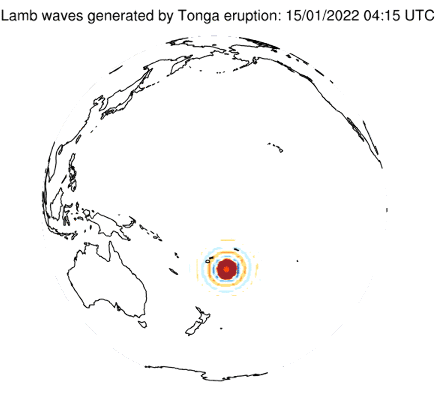Atmospheric Dynamics and Predictability
The research focus of the Atmospheric Dynamics and Predictability group, formerly known as Theoretical Meteorology, is on large-scale dynamics and the role of the tropics in global predictability. We aim at understanding the mechanism behind the continuous red spectrum of the tropical spatiotemporal variance, at modelling the tropical state initial state for the global numerical weather prediction, at quantifying the role of the tropics in extratropical predictability and at an accurate representation of dynamical processes in weather and climate models.
Towards these goals, we develop physical and mathematical methods to diagnose the observed and simulated state of the tropical and global circulation. The group has a long tradition in developing and maintaining weather and climate models of different complexity from 1D toy models without spatial scales and models based on the shallow-water equations to full-scale 3D climate models. Details can be found on our modelling pages.
Recent research building on the theory for flow decomposition into gravity and Rossby waves includes the derivation of energy spectra of vertical motions, wave-mean flow interactions, scale- and regime-dependent quantification of divergence, the impact of the Aeolus winds on equatorial Kelvin waves, and information content of observations in data assimilation. Our research extends well beyond the tropics; we develop parametric models for the growth of error in weather forecasts and apply them to data, quantify the Lorenz energy cycle and trends in Rossby wave variability as well as in the equatorial unbalanced circulation due to climate change.
Real-time dynamical regime decomposition of the analysed and simulated global circulation by the ECMWF model and associated energy spectra are available on the dedicated MODES pages. Take a look at our recent use of MODES for 3D analysis of the equatorial Kelvin waves.
One component of our ongoing research is the development of TIGAR - Transient Inertia-Gravity And Rossby wave dynamics model that applies the Hough harmonics as the expansion functions. The Hough harmonics are eigensolutions of the linearised primitive equations making the Rossby waves, inertia-gravity waves, and the equatorial Kelvin and mixed Rossby-gravity waves the prognostic variables of the TIGAR model.
The two movies show the TIGAR simulation of the Lamb wave generated by the Hunga Tonga–Hunga Haʻapai volcano eruption in January 2022 carried out within 2 days after the eruption without and with realistic topography.
Without topography With realistic topography


The ADP group organises the seminar series on atmospheric dynamics and predictability on Tuesdays, 2:15 pm CET. To see the schedule and subscribe, see our seminar page.
